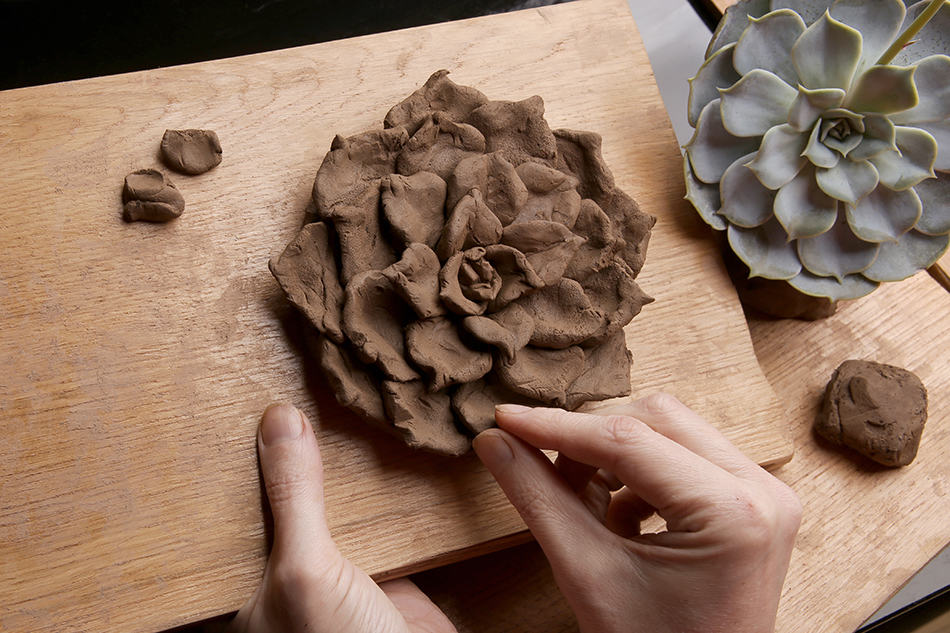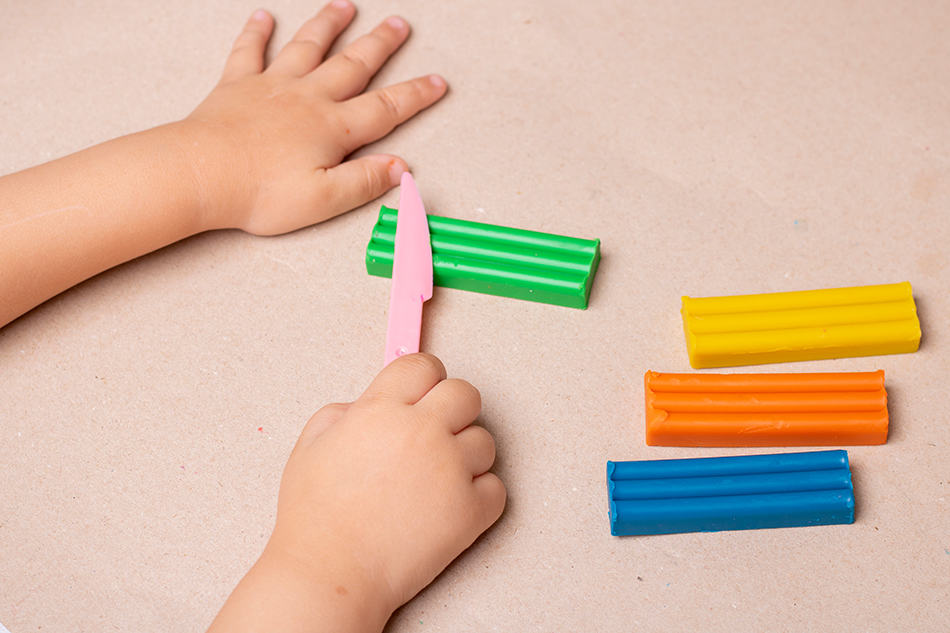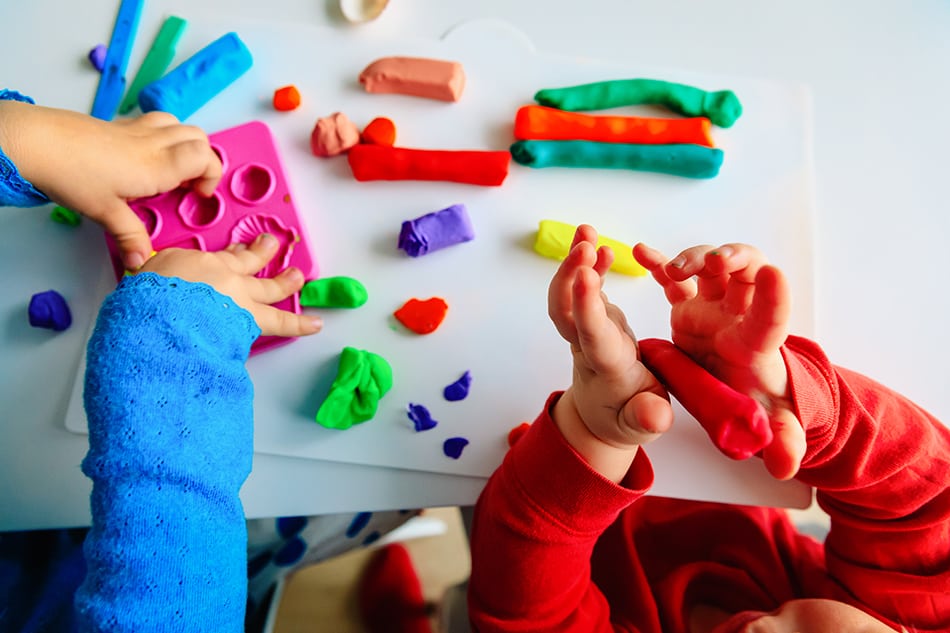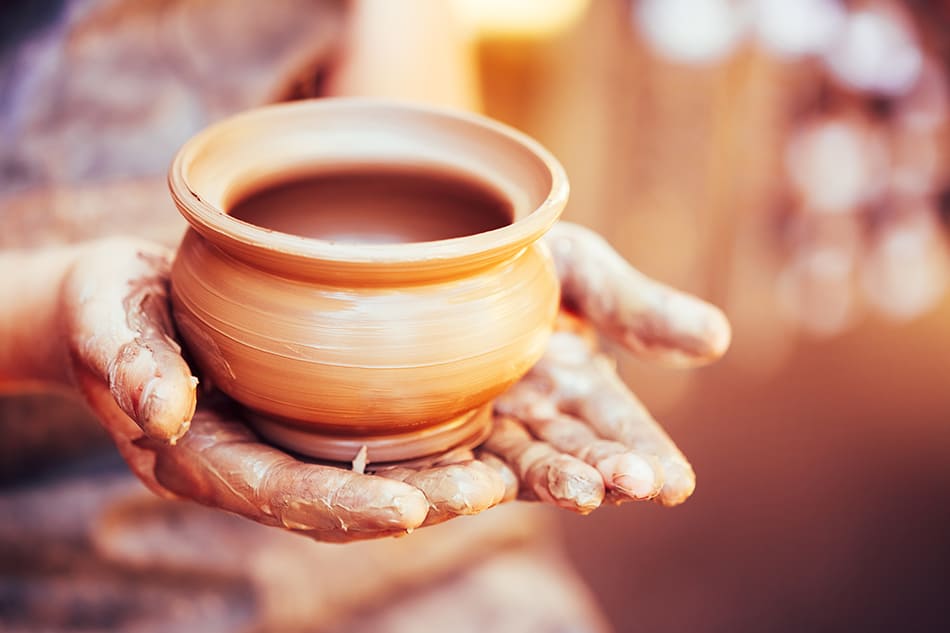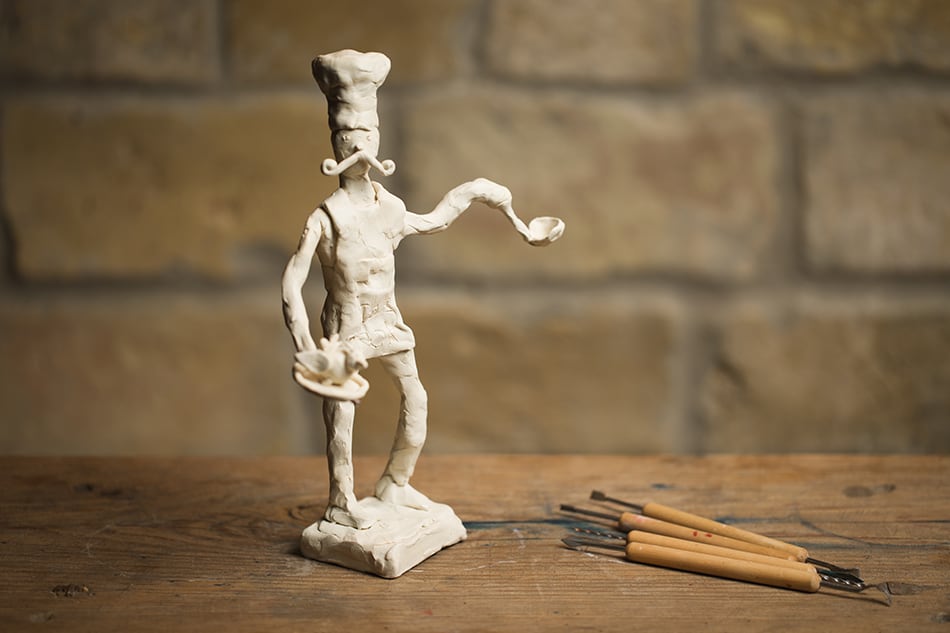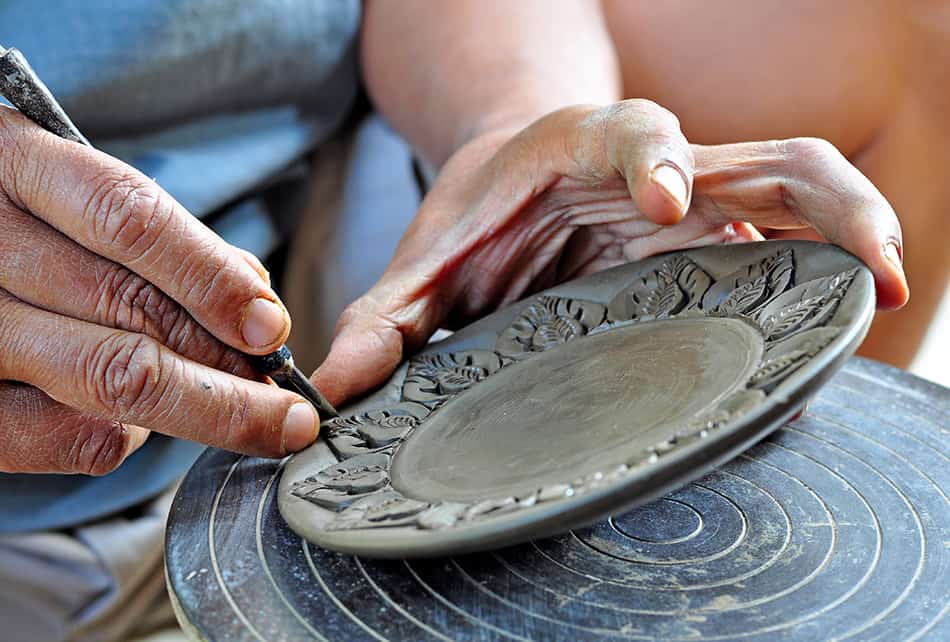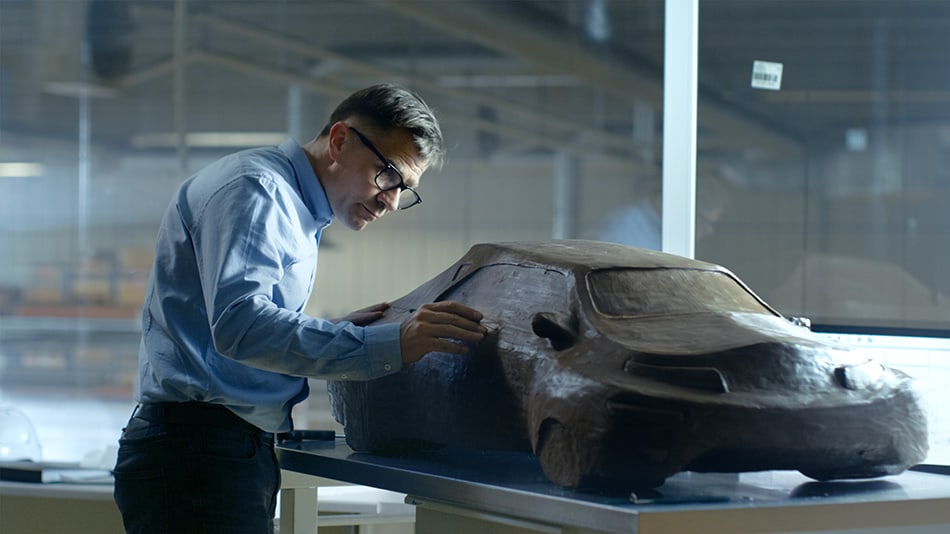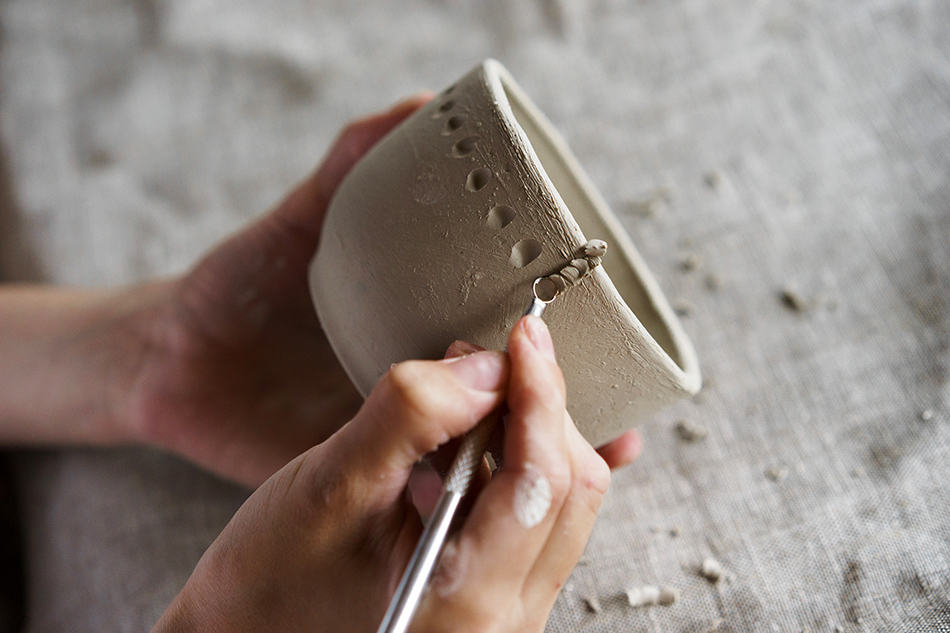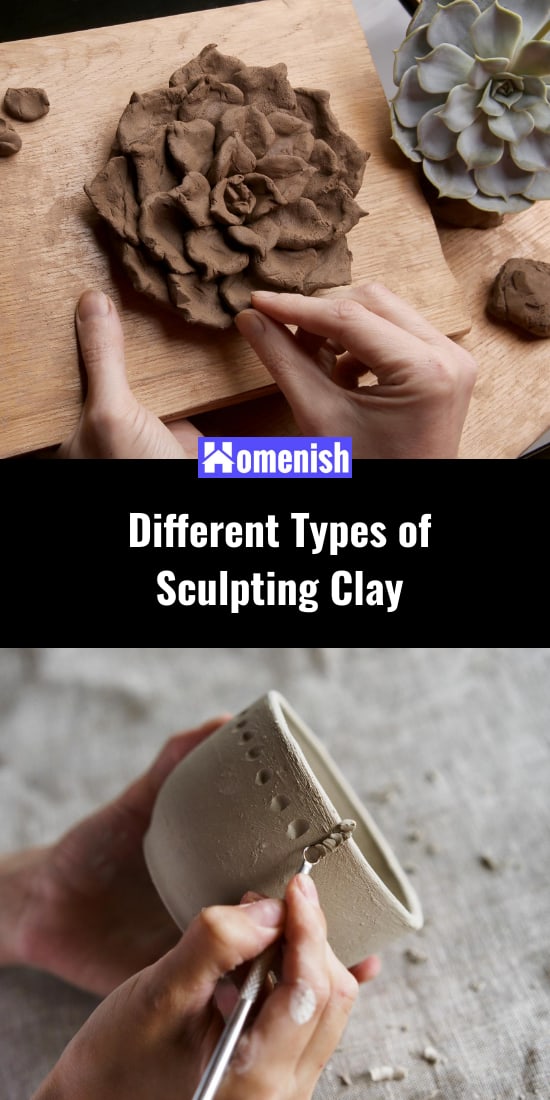If you are an experienced sculptor wanting to learn about other types of sculpting clay, you could use or someone completely new to sculpting and want to find out about the easiest clay to start out with, then this guide is for you.
Here, you’ll learn about the various types of sculpting clays, each with its unique properties and applications. Water-based clays like WED Clay, used in Disney studios for animatronics, offer distinct advantages for certain projects. Meanwhile, Mexican Pottery Clay, known for its natural terracotta color, provides a different experience.
Oil-based clays, including popular varieties like Plasticine and Polymer Clay, offer durability and flexibility, making them perfect for projects requiring a lasting form. On the other hand, ceramic clays such as Earthenware and Stoneware bring a touch of tradition and robustness to pottery and sculptures.
This guide helps you navigate the unique properties of each clay, ensuring you choose the right material for your artistic projects.
What is Sculpting Clay?
Sculpting clay, also known as modeling clay, is a type of pliable substance that is used in creating sculptures, models, or buildings. Sculpting clay is used in a wide variety of settings.
Children can use it to help them learn through play and develop sensory skills. It is often used in schools for children and teenagers, for example, to create art projects and enhance creativity. Clay sculpting and modeling is also a popular hobby for people of all ages, and for many people, it can become a career.
Most of us will have examples of sculpting clay around our homes or gardens. You might have a terracotta plant pot or a stoneware garden sculpture. Or maybe you have an earthenware jug on your windowsill for displaying dried flowers in or a ceramic dish for serving salads in. If you have children, you might also have homemade decorations around your home as mementos of objects made from sculpting clay when they were younger.
There are many different types of sculpting clay; some have qualities that make them suitable for use in numerous situations, whereas some will only be used by professionals. To learn about the different types of sculpting clay available and that would be best suited to your project, check out the following guide.
Types of Sculpting Clay
Water-Based Clay
Water-based clay, as you may well have predicted, is clay mixed with water. It is very popular for many reasons, the primary reason being that it is very inexpensive and therefore great for crafting projects with children or beginners. As long as the correct consistency is achieved by mixing the right amount of water with clay, then it is very malleable and easy to work with, allowing the sculpture to ply their clay into their desired shape without much difficulty.
Another reason that water-based clay is so popular is its ability to dry out quickly. The clay will firm up and ultimately harden as the water evaporates from the clay, and the moisture content lowers. This is good because once you have finished working on your project, you won’t have to wait long for it to dry out and be ready for painting or varnishing. However, the fast-drying quality of water-based clay can work against you if you are somebody who takes a long time to perfect your sculpture.
To prevent the clay from drying out too quickly, you can routinely add splashes of water to it, or if you need to take a break during your project, you can cover it over with a damp cloth. If you want to save your water-based clay for later use, you can wrap it up and store it in an airtight container.
Types of water-based clay:
WED Clay
One type of water-based clay is called WED clay, which stands for Walter E Disney clay. This was first used by Disney studios to create models for animatronics. This clay has similar properties to oil-based clays, and despite being water-based, does have a slightly slower drying out process. It does not need to be fired to dry out and is popularly used among the entertainment industries.
Mexican Pottery Clay
Another type of water-based clay is Mexican pottery clay. This clay has a terracotta color and dries at room temperature without the need for firing. It tends to shrink slightly as it dries, so bear this in mind when modeling.
Moist Clay
Moist clay is another type of water-based clay, which is commonly used for pottery. It is a medium gray color and will dry to a very pale off-white with a hint of gray after it has been fired dry. This is a clay that is very pliable and smooth, making it easy and enjoyable to work with.
Magic Mud
Another water-based clay is called ‘Magic Mud’, and a school teacher developed it. This sensory clay can be dried at room temperature or in a fired kiln, and even after it has dried, it can be reused. Simply break the model up into small pieces and add water to turn it back into its original state.
Oil-Based Clay
Oil-based clay is a type of modeling clay that is made up of a combination of oils, waxes, and clay. This type of clay does not dry out, even when left out for many years, and so is intended to be reused over and over again. This is great as a craft tool for children, as they can have fun creating models, which can be stored and then created into something completely new when they want to play with the clay again.
Because the consistency of the oil is affected by heat, the malleability of the clay will depend on the temperature. The warmer the clay is, the easier it will be to work with. You can preheat oil-based clays to make them softer and more pliable before use, especially if you are working with the clay in a cold climate, as it may have become quite firm. Due to the way oil-based clay does not dry out and can, therefore, be easily moved, it is popular for modeling in animation.
Some types of oil-based clays contain sulfur and, therefore, are not compatible for use with silicone molds. If you wish to work with silicone molds, you need to ensure you specifically buy a sulfur-free oil-based clay. In some cases, clay modelers add petroleum jelly to the clay recipe in order to change its consistency and make it more pliable, but this can be quite an arduous process. Some types of oil-based clay can be heated up to the point that they become liquid and can then be poured into moldings.
Types of oil-based clay:
Plasticine
Plasticine is a type of oil-based clay that also goes by the names plasteline, plasticium, and plastilina. Plasticine is actually a brand of oil-based clay invented by an art teacher who wanted to develop a clay for his students that would not dry out and therefore be able to be used repeatedly. However, Plasticine has now become an interchangeable name for similar types of oil-based clay.
This clay is generally made from oil, wax, and clay flour. It commonly contains sulfur and so should not be used with silicone molds. Plasticine clay comes in a wide range of colors, and it is smooth and easy to work with. It does not stick to your hands or to work surfaces and is excellent for making finely detailed sculptures or projects.
You can also mix different colors of plasticine clay to create new colors. Plasticine clay will never dry out and cannot be fired. If it is exposed to high levels of heat, it will become a greasy mess.
Polymer Clay
Another type of oil-based clay is polymer clay. This is a type of modeling clay that contains polyvinyl chloride (PVC). Unlike many types of oil-based clays, polymer clay can be permanently hardened when heated, making it great for creating permanent projects.
Polymer clay remains pliable and can be reworked over and over again up until the point that it is heated, making it ideal for projects that take a long time to create as you won’t have to worry about the clay drying out. Once heated and hardened, you cannot reverse it.
This type of clay is popular among children, hobbyists, and professionals. It is inexpensive to buy and does not require any specialist equipment because it can be cured in a home oven. Polymer clay comes in a huge variety of colors. It is great for making jewelry, pottery, kitchenware, and models.
Epoxy Clay
Epoxy clay has two elements: epoxy resin clay and an epoxy curing agent. The clay itself is soft and pliable, making it easy to work with. It comes in a good variety of colors, though notably less than polymer clay. As long as the clay is not mixed with the curing agent, then it will not harden and can be reworked over and over again.
Once the two agents are mixed together, a chemical reaction will occur that results in the clay hardening in a few hours’ time. This means that once combined, epoxy clay becomes self-hardening and does not require heating in order to dry out.
The fact that it dries out in as little as two hours means that epoxy clay is not great for projects that take a long time to create. However, there are numerous benefits to working with epoxy clay. Once hardened, epoxy clay is among the strongest types of sculpting clay you can get. It will not crack when exposed to heat as some polymer clays can, and it will not fade or deteriorate when kept outside or in direct light.
Epoxy clay can also be colored with almost any type of paint once hardened, including acrylic paint, spray paint, and oil paint. Epoxy clay is one of the more expensive types of oil-based clays, but its many excellent qualities make it the preferred type of clay for many hobbyists and professional sculptors.
Dough Clay
Dough clay is technically not clay as it contains no natural clay components, but it is considered to be a type of modeling clay that is popular with children. Dough clay is most commonly known under the brand name ‘Play-Doh,’ but several other brands exist, and you can also easily make your own dough clay at home from items you have in the kitchen cupboard. Commonly, this uses ingredients such as flour, cornstarch, salt, and water, along with food coloring, to create the colors you’d like.
The benefit of making your own dough clay is that it is non-toxic and edible (though not necessarily very tasty!), so you can allow your baby to play and experiment with it, knowing that no harm will be caused if they decide to put some in their mouth. You can get as creative as you like when making your own dough clay, and there are even some recipes to try that might be as much fun to eat as they are to model.
For a more flavorsome dough clay, melt down a handful of marshmallows and coconut oil together before adding food coloring and cornstarch. This will make a delicious, stretchy, and fun dough clay. Dough clay is best for recreation and doesn’t work well for creating serious sculptures. When it dries out, it will usually begin to crack, making any models you’ve done short-lived.
The exception to this is salt dough, which is a dough clay made from equal parts table salt and flour, mixed with water until you have a dough consistency. This can be shaped; however, you like and then baked very slowly in the oven at a low temperature for a few hours. Once dried out, the salt dough can be painted and sealed and can last many years. This type of dough is great for home crafting to make items such as Christmas tree decorations, wall hangings, or keepsakes of baby feet and handprints.
Ceramic Clay
Ceramic clay is made from a combination of natural clay materials and added substances, such as powders and glazes. While all clay is a type of ceramic, not all ceramics are made from clay. The description of ‘ceramic’ refers more to the end result of a project, more so than the actual type of clay used to create it.
Types of ceramic clay:
This type of clay is one of the earliest known types of clay used in sculpting and pottery. It is very pliable, making it easy to work with, so it will typically have quite a sticky texture, so expect a good deal of mess and subsequent cleanup. This clay is fired at a low temperature, below 2,190 °F, to harden it. Earthenware, once hardened, will be brittle and liable to break or crack if struck or dropped.
The resulting clay will be slightly porous and, therefore, is not ideal for holding water. Earthenware can range in color, including red, orange, and gray. The resulting color of the hardened earthenware will be affected by the type of firing used and the mineral content of the clay. Terracotta is a common type of earthenware and literally translates to ‘baked earth.’
Ball Clay
Ball clay is also sometimes known as plastic clay. It is a predominantly sedimentary clay that is easily pliable and useful for adding to other types of clay to make them more malleable to work with. Ball clay is not ideal for using alone because it shrinks when drying. When hardened, this clay takes on a very pale gray, almost white color because it has very few mineral impurities.
Stoneware Clay
Stoneware is the name given to ceramics that have been fired at a very high temperature, much higher than earthenware. The resulting product is a very durable and sturdy clay.
After being fired, stoneware is resistant to chips and breakages and tolerant of extreme temperatures. Stoneware is commonly used for pottery, garden sculptures, kitchenware, and plant pots. Finished stoneware has a darker look compared to earthenware and will be more highly textured.
Kaolin Clay
Kaolin clay is made from kaolinite, a layered silicate mineral that is very pure. The lack of mineral impurities compared with other types of ceramic clay makes it very pale in color once hardened, and it is often used in producing porcelain. Kaolin clay is not very easy to work with due to its low plasticity. It is, therefore, commonly mixed with other types of clay in order to produce a more workable product. Often, kaolin clay will be mixed with ball clay because this increases its plasticity and also means it will harden at a lower firing temperature.
Fire Clay
Fire clay is a type of clay that is able to withstand very high levels of heat; therefore, it will only harden at very high temperatures. Fire clay does not have high levels of mineral impurities and, therefore, can be pale in color when hardened. It does, however, have a high presence of iron, which typically results in a more textured surface when hardened. If you want to add extra texture to your sculpture, you can add fire clay to achieve this.
Paper Clay
Paper clay is the name given to any type of clay that has paper pulp added to it. You can buy paper clay ready mixed or create your own at home by adding shredded toilet paper or newspaper and glue to any clay you have.
The fibers in the paper bind the clay together better, resulting in a stronger structure. This can make the clay easier to work with and help your project become sturdier during your creation process. This is great if you are struggling with joins or if your sculpture isn’t holding up well by itself.
However, once fired and hardened, paper clay is weaker than clay that does not contain paper. The more paper fibers are in the clay, the stronger it will be when dry and the weaker it will be once fired.
How To Use Sculpting Clay
The type of clay you are working with will affect how you use it, so it’s important to understand the qualities of your clay, for example, if it needs to be kept wet or worked with quickly. When it comes to the effects you can use to create interesting projects, there are a number of techniques you can employ.
Carving
Carving is a means of creating detail by removing parts of the clay, for example, cutting outlines or shapes in the clay. To do this, you will need a carving tool or a variety of carving tools if you want to achieve a number of different effects. You can scrape clay away from the sculpture or slice it off, depending on the look you want to achieve.
Carving patterns in your clay will give it a unique design and can add character. You could use a repeating pattern or personalize your creation by carving in a person’s name or birth date. Carving can be an enjoyable or monotonous task depending on your personality. Some people find the act of carving very calming and therapeutic.
Modeling
Modeling can be seen as the opposite of carving because it adds detail to a sculpture by adding additional clay rather than taking it away.
In modeling, the sculptor will build up their project by fixing more material onto the original clay. This can result in a very detailed and complex-looking work, creating character and further interest.
Casting
Casting is a technique involving molds, where a substance is melted down until it is liquid and then poured into a mold. Once dried, the mold will be removed, leaving a cast.
Casting is most commonly performed with metal, but it can also be achieved using some types of sculpting clay, notable oil-based clays that can be warmed up to a melting point. Once in the mold, the clay will need to be air-dried to harden and can then be removed from the mold for decoration or sealing.
